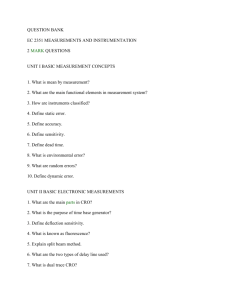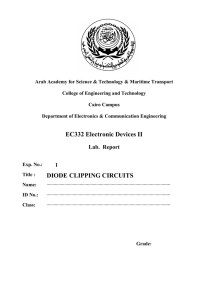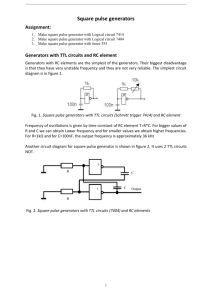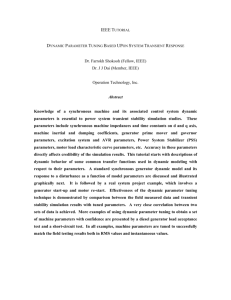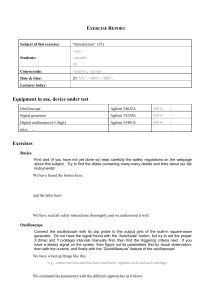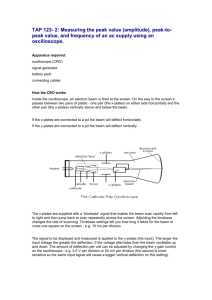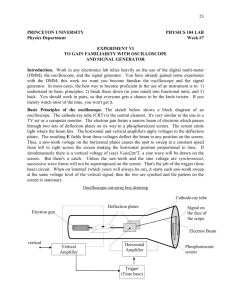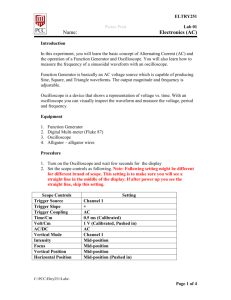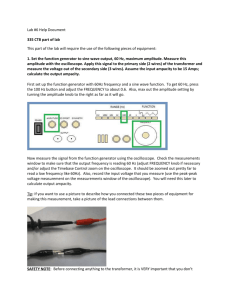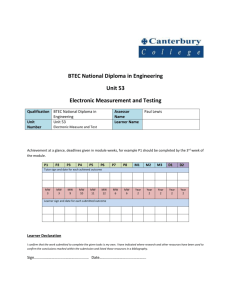Ex4
advertisement
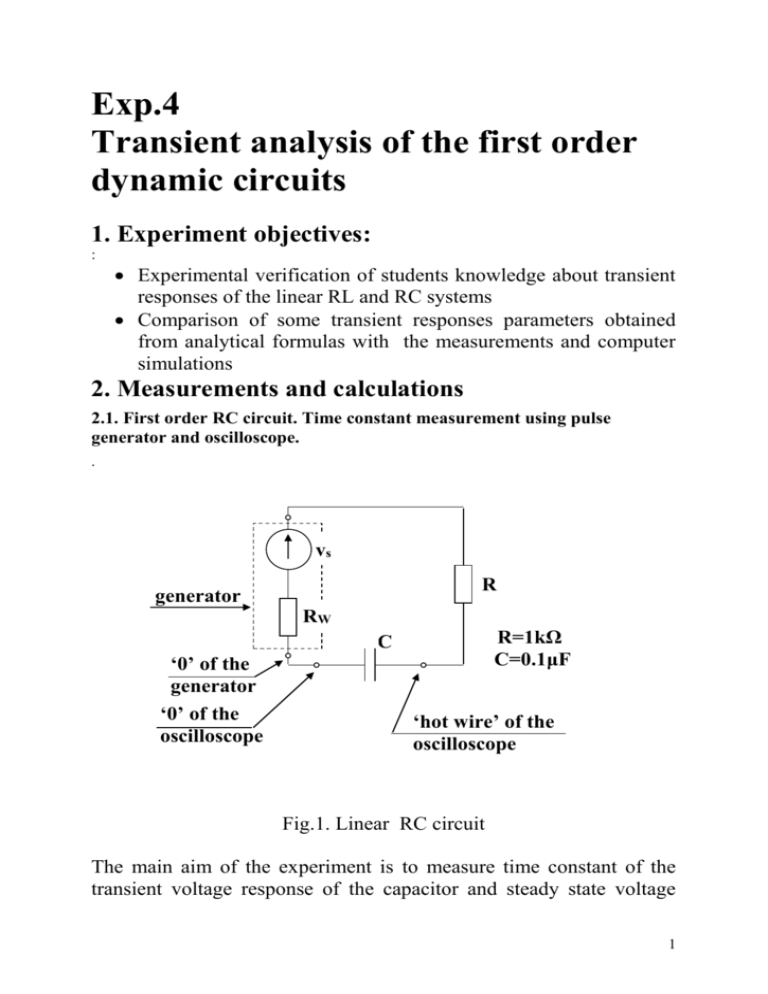
Exp.4 Transient analysis of the first order dynamic circuits 1. Experiment objectives: : Experimental verification of students knowledge about transient responses of the linear RL and RC systems Comparison of some transient responses parameters obtained from analytical formulas with the measurements and computer simulations 2. Measurements and calculations 2.1. First order RC circuit. Time constant measurement using pulse generator and oscilloscope. . vs R generator RW R=1kΩ C=0.1μF C ‘0’ of the generator ‘0’ of the oscilloscope ‘hot wire’ of the oscilloscope Fig.1. Linear RC circuit The main aim of the experiment is to measure time constant of the transient voltage response of the capacitor and steady state voltage 1 measured across capacitor. To preserve proper measurements set frequency of the pulse generator to 300-600Hz. Adjust time and voltage scales ensuring maximal accuracy – one single dynamic state per screen. (300 do 600Hz). Remark: Internal generator resistance should be calculated from the formula (1) where R=1kΩ, Vs. is the measured generator voltage, Vload is the voltage measured across output terminals loaded by the resistor R. V Vload R RG s (1) Vload TABLE 1 R C Vs Vload RG Req τm τc τs kΩ μF V V kΩ kΩ ms ms ms 1.0 0.1 τm – time constant’ obtained from experiment measurements τc –‘time constant’ calculated from analytical formula τs – time constant’ obtained from computer simulations 2.2. First order RL circuit. Time constant measurement using pulse generator and oscilloscope. vs(t) L inductor generator RL RG R „0” of the generator „0” of the oscilloscope R=1kΩ „hot wire” of the oscilloscope 2 Fig.2. Linear RL circuit under test TABLE 2 R L Vs RL RG Req τm τc τs kΩ mH V kΩ kΩ kΩ ms ms ms 1.0 Observe current flow of the inductor. Calculation of the time constant are similar to that performed for RC circuit. Internal resistance of the inductor should be measured by ohmmeter. Report should contain : 1. Analytical solution of the single dynamic state of the RC (capacitor voltage) and RL (inductor current) circuits (response of the single pulse increasing slope). 2. Definition and graphical interpretation of the time constant. 3. Short description of the method of time constant calculations using circuits from Fig.1 and 2 4. SPICE simulation results (plots and circuits models) a. RC circuit simulation with DC generator b. RC circuit simulation with pulse generator modeling the generator using during the laboratory experiment Requirements for STUDENTS: Students should be able to: a) define dynamic and steady state of the system b) formulate differential equations of the first order circuits c) find solution of the first order systems d) define and calculate time constant of RL and RC circuits e) know how to find time constant analyzing the transient response curve!!!!!!!! 3

